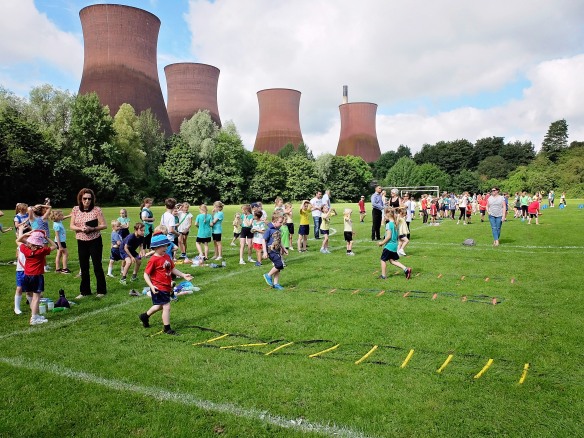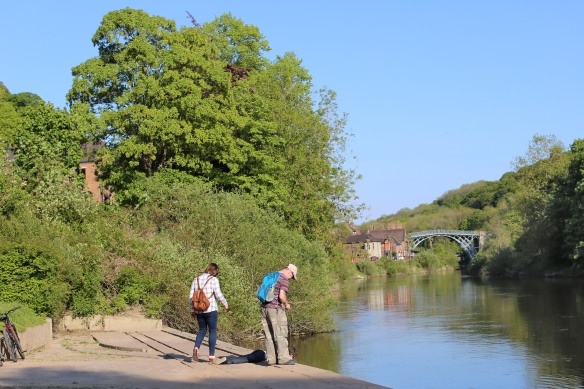‘Not Just A Fancy Bridge’
I pondered an awful lot over which direction to take with this assignment. The brief was to draw upon the techniques and processes learnt so far under the guise of People interacting with place and to choose a location that was both well-known to me and easily accessible.
This was an easy decision to make as I happen to live in the very beautiful Ironbridge Gorge in Shropshire. I know it well and I live amongst it so it was easy for me to plan shoots and plenty of them.
It probably wasn’t the best time of year to plan outdoor shoots in April as the rain was relentless however, May bought some better weather and had more of the warm tones I was hoping to capture to show the place in it’s best light.
The brief also stated that this assignment wasn’t to shot in the theme of a tourism point of view but more in keeping with a travel publication. From that I decided that my angle would be to photograph the lesser known activities of popular tourist destination.
In truth, as residents, we get frustrated by the actions of some visitors to Ironbridge. Some park across our drives, speed around with music blaring, drop litter anywhere and everywhere but for a travel publication I didn’t want to document this side of being a resident. It’s more than that, we have so many places to walk and lots to look at on the way. One point that is very important to mention is the time of day my photo walks took place, that being ‘when the tourists leave town’, early morning or early evening as everything in between belongs to the tourist’s.
My aim here was to capture the various ways this place is used by both its residents and tourists other than the obvious famous bridge and numerous museums. Ironbridge is a town steeped in historical buildings and architecture with various paths forged throughout the years to different places. A favourite resident pastime is simply walking in the evening, generally heading along the river Severn to or beyond the Iron bridge, stopping to take in its beauty and wonder. Art is prominent in the town and local artists are often seen painting at the riverside. It is an area for leisure activities and there are plenty to be had, the river Severn is a huge focus point for children.
To summarise, my intention was to capture Ironbridge culture at various times throughout the day.
My final six images:






With so much to say about one place it was difficult to narrow down my selection to six photographs. The final six were chosen for the way they show people using their space and the variety of functions on offer.
I think I have succeeded in giving an insight into life in a tourist town without the tourist holiday type trappings. The final selection of photographs were taken at all times of the day but mainly focusing on the quieter times with the glorious golden light and I hope this comes across in my work. Ironbridge can be incredibly busy during holiday periods but most of the time it appears as it does in the final selection.
I had hoped to show a variety in subjects, poses, techniques and narrative although having put it all together I can see that there is a similarity in them all. I do have some differing shots in the six photographs I decided not o include in my final six selection but they seemed to steer away from the original theme or didn’t seem relevant.
The photographs I chose not to include:
There are reason for each of these photographs not being included but ultimately I didn’t think they added to the theme of capturing the essence of the place in the light that I feel it deserves. Some are simply good photographs but not relevant.
The photograph above of the child standing in front of the gates is the type of photograph I would produce without a theme to work to. When presented together they wouldn’t have made any sense in relation to the assignment. My approach would have been to see what I think would present as a photograph and continue like this. I like to play with falling sunlight when it’s low in the sky, casting long shadows and perfecting silhouettes and this would have been my approach to this assignment. When trying to make a correlation between them all it would have been unstructured.




















